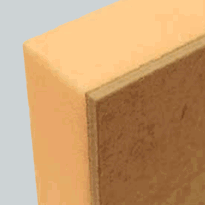Understanding Cold Bridging and Its Impact on Buildings
Cold bridging occurs when specific weak points within a building’s thermal envelope allow heat to escape more rapidly than through surrounding insulated areas. These weak points typically develop where structural elements such as windows, doors, balconies, pipes, or junctions intersect with insulated surfaces. Due to their higher thermal conductivity, these areas create localised cold spots that reduce overall energy efficiency and indoor comfort. Understanding the causes of cold bridges helps in designing effective mitigation strategies. Recognising these weak points is vital because cold bridging can lead to increased energy consumption, higher utility bills, and moisture problems—including mould growth. Identifying signs, such as black mould around skirting boards or windows, can help pinpoint problem areas. Addressing cold bridging through appropriate design and insulation improvements enhances energy efficiency, boosts occupant comfort, and reduces long-term maintenance costs. Recognising and mitigating these weak points is essential for maintaining a warm, energy-efficient, and healthy building environment.
Common Causes of Cold Bridging and Structural Weaknesses
Structural junctions and penetrations are primary sources of cold bridging within buildings, as they often interrupt the continuity of insulation layers and create pathways for heat loss. Examples include balconies, roofing junctions, and floor-wall connections that may lack sufficient insulation, thereby allowing heat to escape and forming localised weak points. [These areas are especially vulnerable because they often involve materials with high thermal conductivity.](https://www.granddesignsmagazine.com/self-build/construction/what-is-a-thermal-bridge-and-how-does-it-cause-problems/) Penetrations such as window and door frames, utility holes, and service ducts also undermine thermal barriers, enabling heat conduction through the building fabric. Additionally, structural components like steel ties, uninsulated concrete edges, steel lintels, and metal fixtures act as conductive pathways, intensifying cold bridging effects. Improper or incomplete insulation installation, including gaps, voids, and insufficient layering around openings and junctions, can further exacerbate thermal weakness. These issues lead to increased energy losses, condensation problems, and moisture-related damage, ultimately impacting the durability and efficiency of the building.
Effective Strategies for Insulation and Thermal Breaks
Implementing effective insulation strategies is essential for minimising heat transfer and preventing cold bridging in buildings. Achieving this involves ensuring that insulation layers are continuous across the building envelope. Using materials with low thermal conductivity helps to reduce heat flow. Additionally, verifying proper installation is crucial to eliminate gaps that could allow heat to escape.
Sealing any potential pathways for heat loss, such as joints or penetrations, further enhances insulation efficiency. Thermal breaks, such as structural solutions with low-conductivity materials at junctions, interrupt heat flow and reduce thermal bridging. Proper selection of materials—like thermal washers for bolts—complements these strategies. Thermal bridging can significantly decrease the overall R-value of a wall, so addressing it is vital for energy efficiency.
Regular thermal performance analysis helps identify weak points requiring attention. This ongoing process supports improvements in energy efficiency and indoor comfort.
- Ensure continuous insulation coverage across all building areas
- Use low-thermal-conductivity materials at junctions and connections
- Seal gaps and openings to prevent unintended heat transfer
Future Trends and Innovations in Cold Bridging Prevention
Advancements in insulation technology are shaping the future of cold bridging prevention through the introduction of new materials and inventive design solutions. Researchers are developing advanced materials with enhanced thermal properties, aimed at significantly reducing heat transfer between building components. Cold bridging occurs when there are inadequate insulation practices around structural elements like studs or joists, allowing cold air to penetrate and energy to be lost. The integration of nanotechnology into insulation products is enhancing their thermal resistance by incorporating nanoparticles that restrict heat flow. Furthermore, smart insulation materials are being designed to adapt dynamically to environmental fluctuations, maintaining optimal thermal performance. Innovative solutions such as structural bridging materials, continuous insulation layers, and high-performance systems like Insulated Concrete Forms (ICFs) are increasingly employed to minimise cold spots. These technological innovations, alongside evolving building regulations centred on energy efficiency, aim to create more sustainable, cost-effective buildings. They also contribute to broader community efforts towards environmental responsibility and sustainable development.
Conclusion
Addressing cold bridging is essential to maintain energy efficiency and structural integrity in buildings. By understanding its causes, implementing precise insulation techniques, and utilising innovative materials, construction professionals can effectively minimise heat loss and prevent structural weaknesses. Ongoing advancements in insulation technology and design methods offer promising solutions for future prevention. Consistent application of proven strategies ensures that buildings remain thermally secure, cost-effective, and durable over time, emphasising the importance of thorough planning and accurate execution in cold bridging mitigation.


























































































































































































































































































































































































